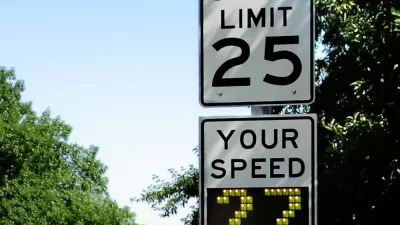Calling it 'mind boggling' that municipalities are removing 'proven safety tools,' the Governors Highway Safety Association strongly endorsed the use of the controversial red light cameras to 'to improve safety for all road users.'

"The Governors Highway Safety Association (GHSA) strongly supports the use of automated traffic enforcement technology, including red light cameras, to improve safety for all road users," wrote GHSA Executive Director Jonathan Adkins. "It is mind-boggling that these proven safety tools are being removed despite numerous research studies validating their safety benefit."
A study released last month by the Insurance Institute for Highway Safety, the first of its kind, analyzed the consequence of turning off existing red light cameras and compared crash rates to nearby cities that kept their cameras operating.
In those cities that turned off their cameras, the rate of fatal crashes involving a driver who sped through a red light was 30 percent higher per capita than if the cameras had remained functional, according to the research.
Most of those killed by red-light-running vehicles are not the drivers, but passengers, pedestrians and bicyclists, the IIHS said.
Delaware example
Adkins also references "a recent evaluation [PDF] of red light camera programs in Delaware that showed a reduction in dangerous T-bone crashes at intersections equipped with cameras." However, that study also reported that "[r]ear-end crashes jumped 7 percent, on average, at DelDOT's red-light camera intersections," according to Karl Baker of The News Journal.
It is unclear exactly what is causing the increase, said Adam Weiser, safety programs manager at DelDOT, but increased roadway congestion might be a contributor.
Local governments opt to disable the cameras
While surveys show that residents in most cities favor red light programs, it's disappointing that the total number of communities using this lifesaving technology has dropped from 533 in 2012 to 467 last year. [A net loss of 66]. Too often, a vocal minority leading the charge to suspend these programs are costing lives in their communities.
Fatalities follow
Following removal of these beneficial safety tools from the community, this research reveals that subsequent fatal crashes at signalized intersections increased by 16 percent. This means that between 2010 and 2014, 63 deaths occurred in intersections that previously were protected by red light cameras.
In conclusion, Adkins recommends that to maximize safety benefits, use of red light cameras follow the guidelines [PDF] established by the Federal Highway Administration.
However, states and municipalities should not look to the federal government for funding assistance thanks to a funding ban in the FAST Act, last year's transportation reauthorization bill.
For more information, including a list of state laws on automated traffic enforcement, see the GHSA webpage, "Speed and Red Light Cameras" and the National Conference of State Legislatures webpage, "Automated Enforcement Overview."
Hat tip to AASHTO Daily Transportation Update.
FULL STORY: State Highway Safety Group Supports Red Light Cameras

Maui's Vacation Rental Debate Turns Ugly
Verbal attacks, misinformation campaigns and fistfights plague a high-stakes debate to convert thousands of vacation rentals into long-term housing.

Planetizen Federal Action Tracker
A weekly monitor of how Trump’s orders and actions are impacting planners and planning in America.

San Francisco Suspends Traffic Calming Amidst Record Deaths
Citing “a challenging fiscal landscape,” the city will cease the program on the heels of 42 traffic deaths, including 24 pedestrians.

Defunct Pittsburgh Power Plant to Become Residential Tower
A decommissioned steam heat plant will be redeveloped into almost 100 affordable housing units.

Trump Prompts Restructuring of Transportation Research Board in “Unprecedented Overreach”
The TRB has eliminated more than half of its committees including those focused on climate, equity, and cities.

Amtrak Rolls Out New Orleans to Alabama “Mardi Gras” Train
The new service will operate morning and evening departures between Mobile and New Orleans.
Urban Design for Planners 1: Software Tools
This six-course series explores essential urban design concepts using open source software and equips planners with the tools they need to participate fully in the urban design process.
Planning for Universal Design
Learn the tools for implementing Universal Design in planning regulations.
Heyer Gruel & Associates PA
JM Goldson LLC
Custer County Colorado
City of Camden Redevelopment Agency
City of Astoria
Transportation Research & Education Center (TREC) at Portland State University
Jefferson Parish Government
Camden Redevelopment Agency
City of Claremont





























